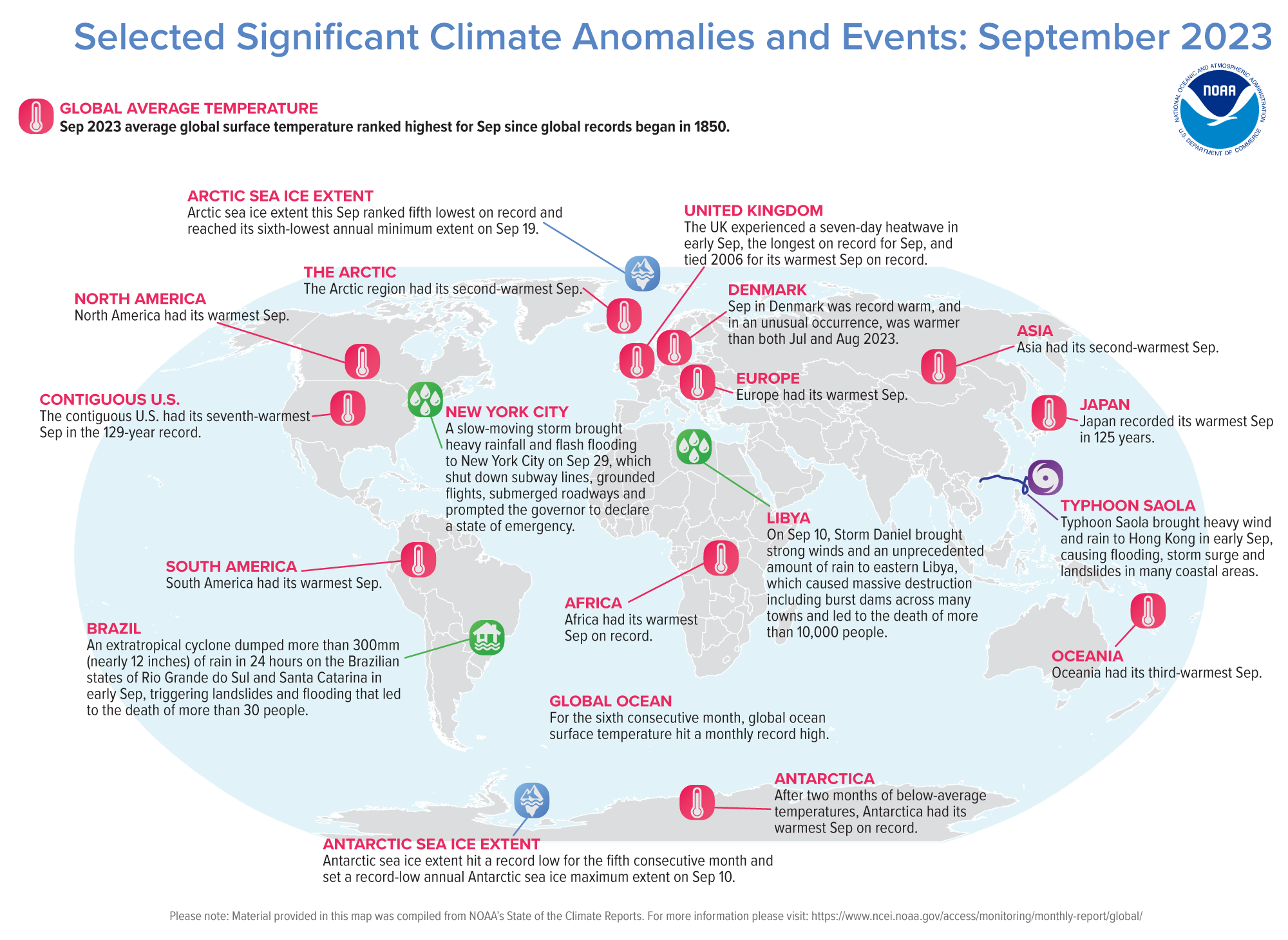2023 shaping up to be warmest year in NOAA's global climate record

HUARINA, BOLIVIA – SEPTEMBER 29, 2023: An aerial view of a boat stuck in the dried lake bed of Lake Titicaca. The water level of Titicaca, the largest lake in South America, has dropped drastically due to the unprecedented winter heat that hit the country. September 2023 was the warmest September on record for South America and the globe. (Image credit: Gaston Brito Miserocchi/Getty Images)
Last month marked another month of record-breaking temperatures throughout the globe, with September 2023 ranking as the warmest September in NOAA’s 174-year global climate record.
September’s temperature also helped propel 2023 into the lead as the warmest year-to-date on record, according to scientists at NOAA’s National Centers for Environmental Information (NCEI).
“September 2023 was the fourth month in a row of record-warm global temperatures,” said NOAA Chief Scientist Dr. Sarah Kapnick. “Not only was it the warmest September on record, it was far and away the most atypically warm month of any in NOAA’s 174 years of climate keeping. To put it another way, September 2023 was warmer than the average July from 2001-2010.”
Below are more highlights from NOAA’s September global climate report:
Climate by the numbers
September 2023
The average global temperature for September was 2.59 degrees F (1.44 degrees C) above the 20th-century average of 59.0 degrees F (15.0 degrees C), ranking as the warmest September on record. September 2023 saw the highest monthly global temperature anomaly — which indicates how much warmer or cooler temperatures are from the long-term average — of any month on record.
September 2023 marked the 49th-consecutive September and the 535th-consecutive month with temperatures above the 20th-century average.
Africa, Europe, North America and South America each had their warmest September on record. Asia had its second-warmest September, while September in Oceania ranked third warmest. Looking at the poles, Antarctica had its warmest September, while the Arctic saw its second warmest.
For the sixth consecutive month, September also saw a record-high monthly global ocean surface temperature. September 2023 tied August 2023 for the highest monthly sea surface temperature anomaly (1.85 degrees F, or 1.03 degrees C, above average) of any month in NOAA’s global record.
Year to date (YTD, January through September 2023)
The YTD average global surface temperature was the warmest on record at 1.98 degrees F (1.10 degrees C) above the 20th-century average of 57.5 degrees F (14.1 degrees C). South America and Europe had their record-warmest such YTD, with Africa seeing its second warmest.
According to NCEI’s Global Annual Temperature Outlook and data through September, there is a greater than 99% probability that 2023 will rank as the warmest year on record.

Other notable climate events in the report
More sea ice records broken: September 2023 set a record for the lowest global September sea ice extent (coverage) on record, besting the previous record low from September 2016. This primarily resulted from record-low sea ice in the Antarctic, which saw its fifth-consecutive month with record-low sea ice coverage. The Arctic sea ice extent for September 2023 ranked as the fifth smallest in the satellite record at 1.69 million square miles, or 470,000 square miles below the 1991–2020 average.
Seventeen named storms occurred across the globe in September: Seven of the 17 named storms reached tropical cyclone strength (sustained winds of 74 mph or higher), and four reached major tropical cyclone strength (sustained winds of 111 mph or higher). The global accumulated cyclone energy was about 70% of the 1991-2020 average for September. Ten named storms were active in the Atlantic during September, which tied 2010 and 2020 for the most on record.
More > Access NOAA’s September global climate report and download the images.



